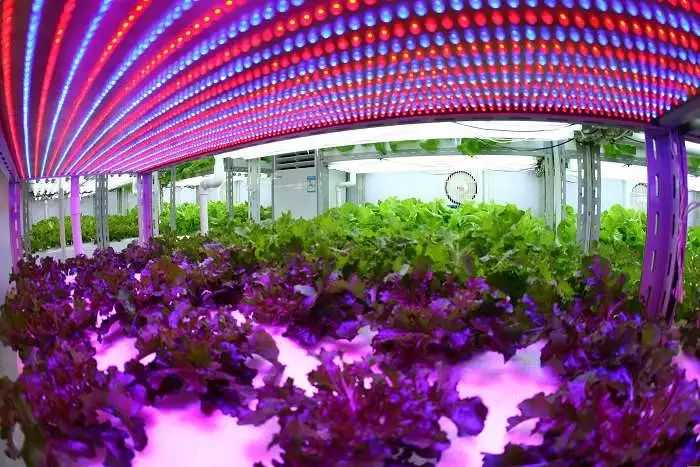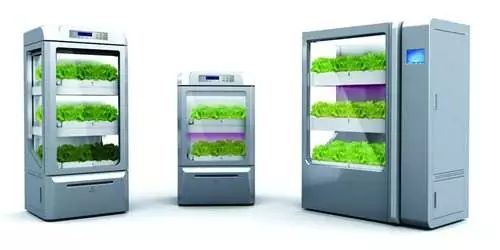Compared with China, a large agricultural country, although Japan has a small land area and many hilly hills, its developed agricultural technology and intensive agricultural tradition have amazed the world. In recent decades, as Japan's aging population has intensified and young people are generally reluctant to engage in arduous agricultural work, Japan has been forced to explore a smart agricultural model that reduces manpower and improves production efficiency, and provides many lessons for Chinese agriculture. The "Global Times" reporter recently went to Japan to study agriculture with the joint delegation of China, Japan and South Korea. Here, the reporter saw the most advanced Japanese agricultural business model, and also understood the failure experience of its development, and provided some reference for China's agricultural development. Computer farming during the day, robots on duty at night The first stop of the reporter was the Fujitsu "Autumn" smart farm in Putian City, Shizuoka Prefecture, Japan. The Qiu Cai Farm Park covers an area of ​​85,000 square meters and has 12 football fields. There are many vegetable greenhouses up to 6 meters in the park, and the exterior is all glass. The steel frame structure at the top of the greenhouse is also very small. The person in charge of the farm told the reporter that this is to ensure a larger area of ​​light. Before entering one of the greenhouses where the peppers were grown, the reporter was asked to put on a plastic jacket, put on rubber gloves and disinfect the soles and hands. The staff also reminded reporters not to touch the plants by hand to ensure that the environment is as sterile as possible. Walking in the middle of a row of plants, the reporter saw that the plants were cultivated in a special artificial cultivation soil, and water, nutrient solution and carbon dioxide were connected through the pipeline from the bottom. The branches of the colored peppers continue to grow along the hanging steel wire, and the staff needs a special lift truck to enter the rows of plants for picking. The humidity and nutrient supply in the greenhouse are controlled by computers. Qiu Cai Farm Specialist Mr. Ito told reporters that Qiu Cai Farm was jointly established by a well-known Japanese IT company Fujitsu and an agricultural finance company and a local seed research and development company in Putian in 2016. At present, Qiu Cai Farm has initially realized the high degree of automation of environmental control and the visualization of operation management. The staff can observe the temperature, humidity, and daily light of the greenhouse in real time through multiple displays in the main building to realize remote operation and cloud data. Japanese typhoons are frequent. When a typhoon strikes, the staff can remotely control the skylights in the greenhouse. Ito Shengmin told reporters that there are self-service robots walking along the track at night, using LED lights and other equipment to monitor the plants and form a photosynthesis color image for the staff to adjust the temperature and humidity. two "Plant factory" into investment hot After leaving Shizuoka, the reporter went to a plant in Chiba Prefecture. The so-called "plant factory" uses the computer to automatically control the environmental conditions such as temperature, humidity, light, CO2 concentration and nutrient solution of plant growth, and realizes mass production of plants in a short period of time and in a small space to realize crops. Efficient agricultural systems for continuous production. The concept of “plant factory†first appeared in Northern Europe, but it was first applied in Japan on a large scale. There are currently more than 400 artificial plant factories in the world, half of which are in Japan. In a two-story building surrounded by vegetable greenhouses in the National Chiba University campus, the reporter saw the 74-year-old director of the Japan Plant Factory Research Association in the tree. In an interview with a plant factory, Gu said that the plant factory is a closed environment, and the staff monitors the growth of vegetables through a unique “growth management system†in Chiba Prefecture. It takes about 20 days for vegetables to start planting and seedling. On this basis, it can be harvested in more than ten days. A plant factory greenhouse that requires 10 people to manage, can harvest 1 million vegetables a year and sell 100 million yen (about 5.87 million yuan). In the visit room, the reporter also saw a small plant factory for home and university teaching. The size is the same as that of the refrigerator freezer. You can also connect with other people through the web app. In recent years, plant factories have become a popular target for global agricultural investment. One of the reasons for the increase in investment, according to the introduction in ancient times, is the large-scale use of LED lights in plant factories. In the past, the cost of plant factories accounted for about 25% of electricity costs. After the use of LED lights, the electricity bills dropped significantly, which reduced investment costs. It is understood that artificial light type plant factories mainly produce a variety of vegetables, and researchers are concerned about higher value added medicines, such as angelica. There are also plant factories in China that focus on the production of cosmetic raw materials. å The foresight of Japanese agriculture At the beginning of this year, some media reported that some factories in Japan were poorly managed, 70% of them were profitable, and big companies such as Toshiba were withdrawing. Previously, many Japanese farmers had started to plant plants at a subsidy of 70%. However, due to the lack of relevant technology, these plant factories have successively closed down after exhausting government subsidies. Some commentators said that this is the opposite of China's agricultural development. In this regard, Gu said that the plant factory that is currently truly profitable in Japan accounts for about 30%. But he believes that it is not surprising that 70% of plant factories have deficits. "The negatives of the media on new things should not be over-emphasized. 50 years ago, no one agreed to grow vegetables in greenhouses. Now 80% of tomatoes and 90% of strawberries in Japan are Planted in the greenhouse." In addition, the lack of funds is also a major bottleneck restricting the development of Japanese agriculture. In the tree, Toshiki said that Japan and South Korea are at a dangerous state in the development of plant factories because of insufficient investment. Sun Zhengyi, the richest man in Japan and the CEO of Softbank Group of Japan, has invested in an American plant factory, and the Chinese LED company Sanan Group and the Institute of Botany of the Chinese Academy of Sciences have cooperated in the construction of the world's largest plant factory in Fujian. profound. Although Japanese farmers have the patience and patience of “embroideryâ€, Japanese agricultural enterprises have long been a phenomenon of “single fight alone†and are also factors that restrict their agricultural development. When Ito’s introduction to the “Global Times†reporter’s original intention of the establishment of Qiu Cai Farm, it was said that in the past, Japan’s agriculture had “pointing to one-wayâ€, “research is research, production is production, and circulation is circulatingâ€. Taking the Japanese agricultural breeding model as an example, Ito said that there are only two large-scale nursery companies in Japan. Many of the small-scale nursery workshops cultivate seed quality is not bad, but because there is no downstream, the added value is low. Gas Explosion-Proof Motor,Explosion Proof Motors,Gas Explosion Proof Motors,Explosion Proof Electric Motor Yizheng Beide Material Co., Ltd. , https://www.beidevendor.com
